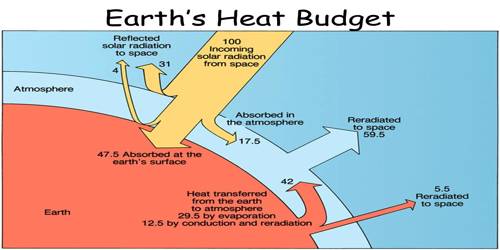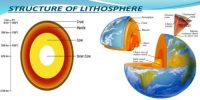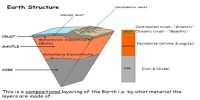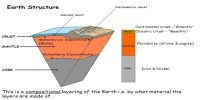Heat budget of the Planet Earth
A heat budget is a perfect balance between incoming heat absorbed by the earth and outgoing heat escaping it in the form of radiation. The figure depicts the heat budget of the planet earth. The earth is a whole does not accumulate or lose heat. It maintains its temperature. This can happen only if the amount of heat received in the form of insolation equals the amount lost by the earth through terrestrial radiation.
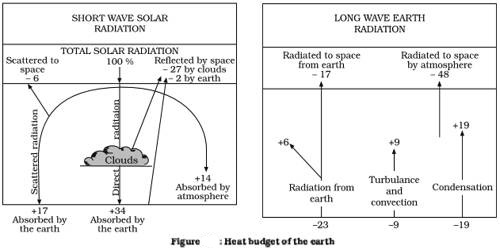
Consider that the insolation received at the top of the atmosphere is 100 percent. While passing through the atmosphere some amount of energy is reflected, scattered and absorbed. Only the remaining part reaches the earth surface. Roughly 35 units are reflected back to space even before reaching the earth’s surface. Of these, 27 units are reflected back from the top of the clouds and 2 units from the snow and ice-covered areas of the earth. The reflected amount of radiation is called the albedo of the earth.
The remaining 65 units are absorbed, 14 units within the atmosphere and 51 units by the earth’s surface. The earth radiates back 51 units in the form of terrestrial radiation. Of these, 17 units are radiated to space directly and the remaining 34 units are absorbed by the atmosphere (6 units absorbed directly by the atmosphere, 9 units through convection and turbulence and 19 units through latent heat of condensation). 48 units absorbed by the atmosphere (14 units from insolation +34 units from terrestrial radiation) are also radiated back into space. Thus, the total radiation returning from the earth and the atmosphere respectively is 17+48 = 65 units which balance the total of 65 units received from the sun. This is termed the heat budget or heat balance of the earth. This explains why the earth neither warms up nor cools.
